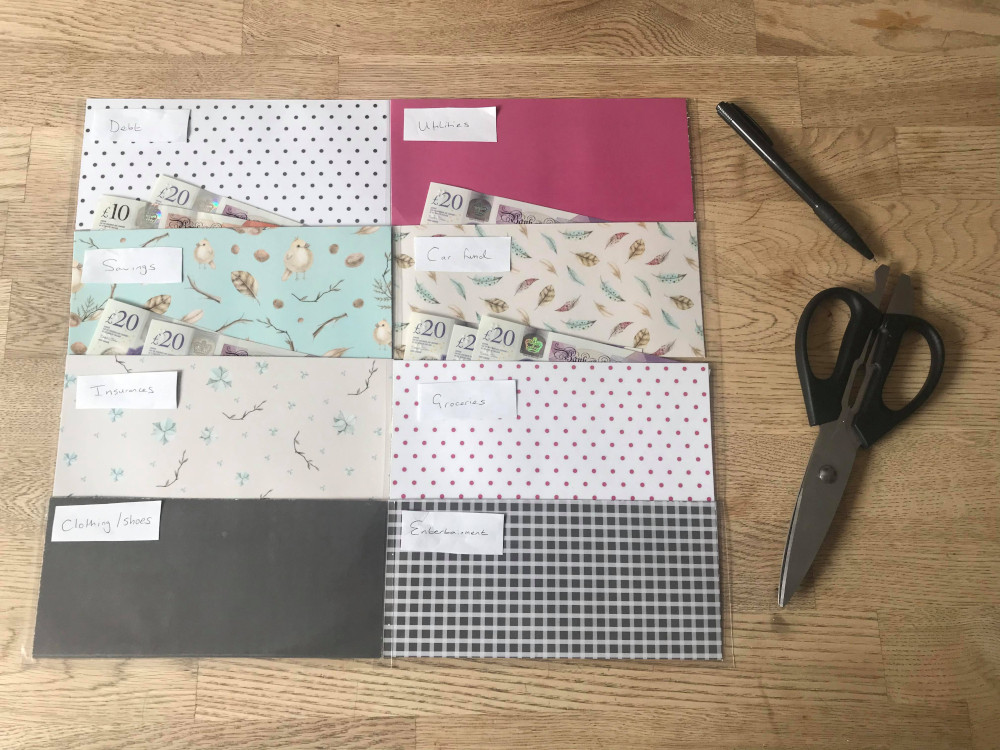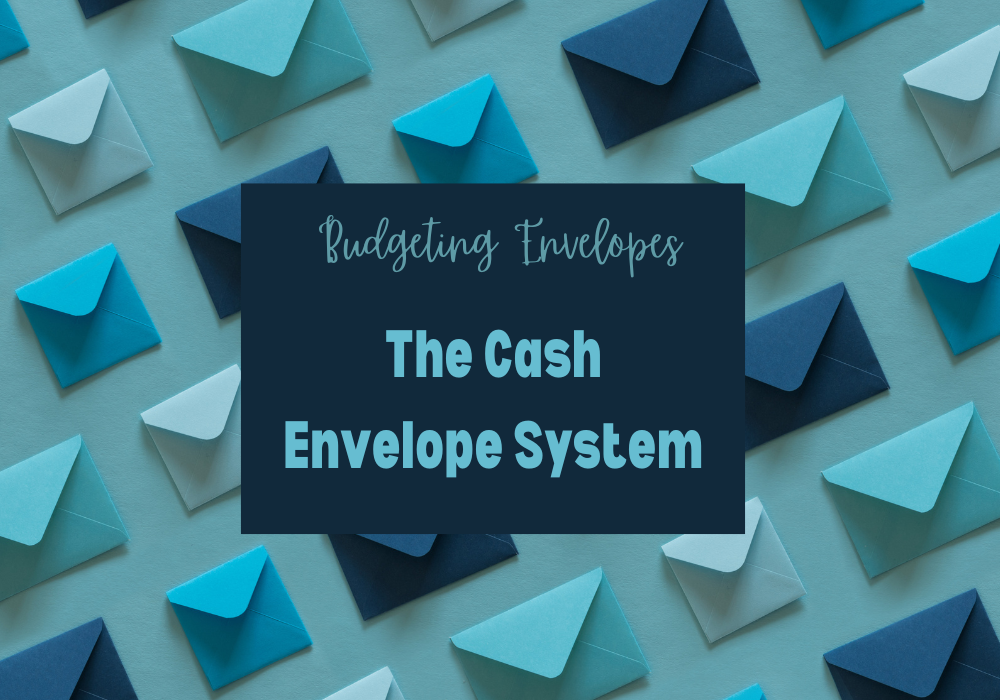Disclosure: This post contains affiliate links & commission may be earned from purchases. As an Amazon Associate I earn from qualifying purchases.
Last Updated: March 26, 2025
How do you start a Cash Envelope System? Cash Envelopes UK help you take control of your Finances using Budgeting Envelopes & Dave Ramsey’s Cash Envelope System in 2025.
Budgets aren’t always easy to stick to, and if you’re anything like me then impulses can sometimes take over and you find you’ve overspent before you realise.
The Cash Envelope Method of budgeting, however, is a simple way to take your budget in hand and help maintain your discipline with it.
The Cash Envelope System

Is there a simple way to take your budget in hand?
The short answer is yes, and Dave Ramsey’s Cash Envelope System is it. Here’s a step-by-step guide through the process to start taking control of your finances today.
What is the Cash Envelope System?
Simply put, this budgeting method allows you to track and control exactly how much you spend, by keeping cash in separate budgeting envelopes.
You spend only the money in each envelope for your specified categories. At the end of the month, you can see what you have left in each category with a quick look inside the envelope.
There are 4 easy steps to the Cash Envelope System:
1 – Decide on your budget categories for each envelope
2 – Calculate your budget amount for each category
3 – Create and fill cash envelopes for your budget categories
4 – Spend only what you’ve put in each envelope
Let’s break those down and get to grips with the cash envelope method…
STEP 1 – Your Budget Categories
Fixed Costs
First, eliminate the categories you don’t need to organise in your budgeting envelopes – your fixed costs each month. Costs such as:
- Rent/mortgage
- Phone / Internet bill
- Utilities
- Insurances
- Car Running Costs
- Groceries
Any cost you have a direct debit for falls into your fixed costs. These costs are set, all you need to do is make sure you leave enough money in the bank to cover them each month.
One very reassuring thing about this method is that you always know your bills are covered. There is no danger of accidentally spending too much from your bank, as everything else will be paid for in cash.
Budget Categories
Next, you want to think about your budget categories for everyday spending or your variable spending. Example categories are:
- Eating out
- Petrol
- Clothes
- Presents
- Entertainment
- Clothing / Shoes
You get the idea. I’d also suggest including an “impulse buying” category!
Now it’s time to hit the shops and buy some envelopes – You’ll need one for each of the categories on your list.
You can purchase the envelopes I use for £6 delivered at Amazon here
STEP 2 – How Much To Spend in each Category
Now you work out how much you want to allocate to each category each month.
Take your time with this step, it’s important to not over or under budget for each category as best you can. Here are a few things to consider while putting your budget together.
First, calculate your monthly income:
Add together any income streams you have for the month. You wage, side hustles, etc.
Next, take away all the fixed costs you have each month. Remember, this is the amount you will leave in your bank to cover your bills.
What you have left will be split between your budget envelope categories.
Overspending is what we’re trying to avoid. So while you figure out how much you want to allocate, concentrate on these two things: your past spending (how much you usually spend in that category), and how much you want to spend in that category.
For example – Looking back through your account you see you spend about £200 each month eating out.
However, you want to bring this down to £100 per month. Ideally, you would budget the £100, and make yourself stick to it, but it’s ok to start with a compromise and find a middle ground, so £150.
Once you have gone through your budget and worked out how much you want to allocate to each category (making sure your total doesn’t exceed your income), you’re now ready for the next step.
We have a great step-by-step guide to building your budget here
STEP 3 – Fill your Envelopes with Cash
This is when you take control of the month. Go to the bank, take out the cash, and place the exact amount you’ve budgeted in each envelope. Simple.
You have now allocated the funds to each category, and have the cash sitting in each envelope ready to be spent (carefully and considerately!). Make sure you’ve labeled each envelope clearly so you can easily grab and go.
What if you’re paid multiple times a month?
If you get paid multiple times a month, then you need to go and withdraw cash to add to your envelopes for each time you are paid.
Let’s look at an example to make that clear – you have budgeted £400 for your food shopping this month, and you get paid twice a month.
When your first paycheck goes in, you withdraw £200 from the bank and add it to your food shopping envelope (the total amount for the month divided by the number of paychecks for that month – £400 / 2 = £200).
Then, when your second paycheck goes in, you do the same again, taking out £200 in cash and adding it to your envelope.
You will do the same for each category – withdrawing the amount based on the number of paychecks per month, and adding the cash to your budgeting envelopes.
At this point, the only money left in your account is the money to pay your bills for the month (your fixed costs). Everything else will be in cash and split between your envelopes.
STEP 4 – Spend only what’s in your Envelope
This is where it gets tougher, and where you have to be disciplined and follow the rules of the Cash Envelope System closely.
You can only spend the cash in the envelope on that budget category. Once it’s gone, it’s gone!
There are a couple of things to consider, to help you stick with this:
Only take the amount of cash you need to the shops!
When you head to the shop you should have a clear idea of what it is you’re looking to buy, and how much it is. That way you can take the precise amount of cash with you, and you won’t be tempted, or able, to overspend.
If it is too much, then put it back!
It’s a hard thing to do, but again you have to be strict with yourself and only spend what you have allocated from your envelope.
If you are in the supermarket and you have brought £50 with you but your total is £60, put some back. You can reassess your budget for the next month to adjust, but this month £50 is all you have for this shop!
Never borrow money from another Envelope!
Once you’ve allocated your cash to an envelope, that’s the amount you have to spend in that category. As tempting as it might be, do not borrow from another envelope.
There are times when emergencies arise, I know, and this is something we deal with a little later so don’t worry.
STEP 5 – Stay Disciplined
I’ve added this additional step as it is so important and worth repeating – You have to stay disciplined to feel the benefits. It can be tough when the cash is just at your fingertips.
If you think ‘I’m not going to spend any more on petrol this month, so I could take it to go out for dinner tonight’ – DON’T. You have not underspent in any category until it’s the next month and you are starting again.
That’s it – the Cash Envelope Budget by Dave Ramsey. Simple but highly effective.
Check out Dave Ramsey’s Baby Steps (UK Version)
Cash Envelope System Tips
Shopping Online
While I would say that this method works best with cash, it is achievable if you prefer to shop online:
Instead of putting cash in an envelope, you write your budget amount on the envelope to keep track while keeping the cash in the bank.
Any time you spend some money in that category, you then subtract that from the total on the envelope. Once the number reaches zero, you are done for that month.
This is a little more difficult and requires more discipline and accountability to not accidentally overspend in that category.
The bottom line for the Cash Envelope System, though, is that you stick with the amount you have allocated to spend in each category. Whether cash or digital, this is very much dependent on you, and how well you stick to it.
The good news here, however, is that banks are catching up with our desire to have better control over our finances and several bank accounts now can budget within their apps.
Starling Bank, for example, has a ‘spaces’ section on their app that protects the amount you put into each category, separating your allocated amount from your main balance. Much like the envelopes.
In this instance, you could create a space for each budget category, put the money in and then only take the amount out you need to spend. Once that space is empty, you have no more to spend in that category.
If your partner does the shopping
It can be hard to get your partner on board with a budgeting system like this. Perhaps they don’t have the same interest as you or don’t want the hassle of watching every penny they spend.
In these situations, it is best to have a conversation with your partner about why you want to do this and what you are looking to achieve. You must be both on board to be successful with the Cash Envelope Method.
What about leftover Cash?
It is particularly satisfying getting to the end of the month and still having cash in some of your envelopes.
The best part is you can use that cash to treat yourself for doing so well if you want. Go out for an extra meal or treat the family to a special day out.
You can save the money or roll it over to the next month if you want.
If you regularly underspend in a category, you could adjust your budget by reallocating some funds to another category.
Or if you are going through Dave Ramsey’s Baby Steps, you could also use your cash for the step you are currently on. It’s a fantastic way of taking control of your finances.
Emergencies
Emergencies are bound to happen at some point; the car breaks down, your boiler needs fixing, and so on.
In those circumstances, if you don’t have an emergency fund saved (again see Dave Ramsey’s Baby Steps!) then of course you will need to reallocate funds to cover the emergency.
Find it hard to save money? Why not try out one of our Money Saving Challenges
Now all you have to do is start. You can do this! If you have any questions or just want to let us know how you are getting on with the steps, please let us know in the comments below…




